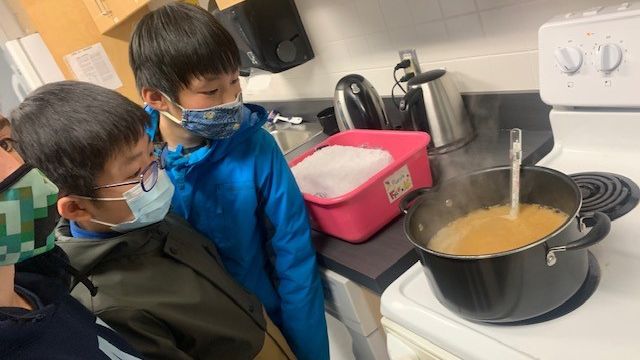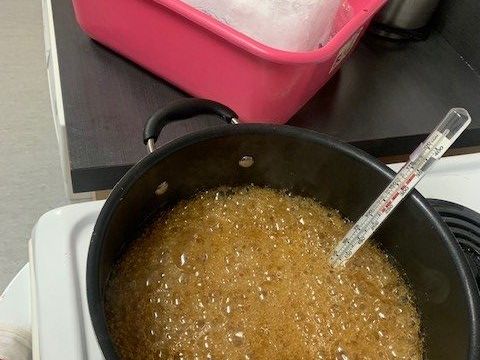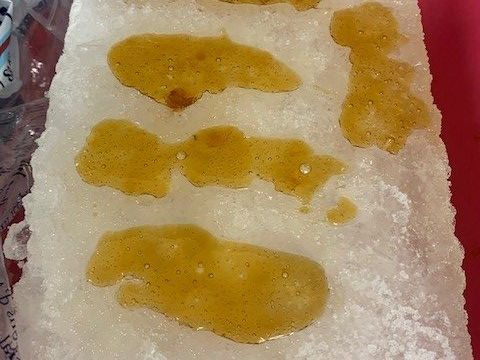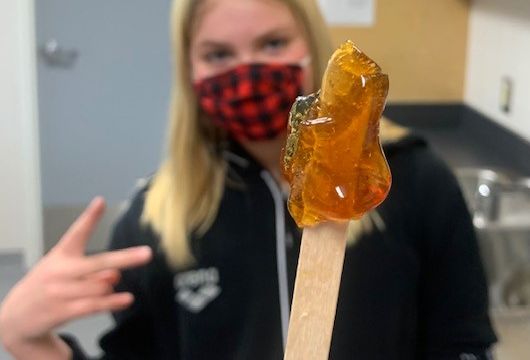The process for maple syrup can begin as early as mid-February in Québec, but is often between mars and avril. During les temps de sucre, sap is slowly collected from maple trees , and boiled down into the delicious amber syrup we use on our pancakes and French toast.
Division 3 was amazed to learn that the sap that comes out of the tree is 97% water, and only 3% sugar! The sap needs to be boiled down so much that only 1.5L syrup is created from 60L of sap! One student remarked, “No wonder it’s so expensive!” Agreed–it’s like liquid gold! The sap-to-syrup process ties into our Science learning with extraction methods: getting the sap from the trees, and reducing the liquid down by evaporating the water. Check out this video on the process of making syrup!
In French, Division 3 has been learning some winter vocabulary, about the tradition of Carnaval de Québec, and about les temps des sucres. Today we enjoyed learning about and making le tire d’érable. (There are lots of recipes, but it’s a pretty simple process as long as you get the temperature right! Find a recipe here.)
We noticed that the longer the maple syrup heated, the stiffer the candy became, and at the end it became quite granular. Students hypothesized that the longer the syrup is boiled, the less water remains in the pot, and the more solid the maple syrup becomes. At the end, we were left with a sugar-like substance in the bottom of the pot, confirming our hypothesis. One student wondered if perhaps the sugar crystals settled to the bottom as the remaining syrup cools.
I hope everyone enjoyed their taste of le tire d’érable!
Division 3: Have you tried it before or was this your first time? Which stage was your favourite version (the softest, a little harder, or the sugar)?




it was delectable!